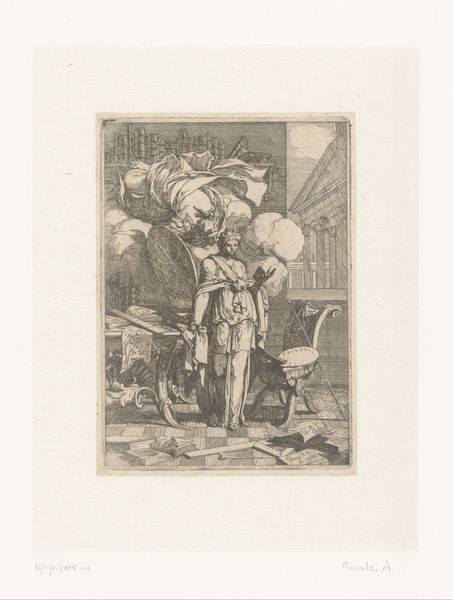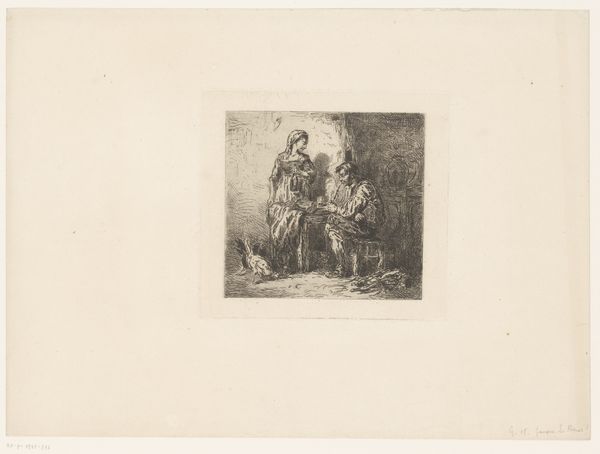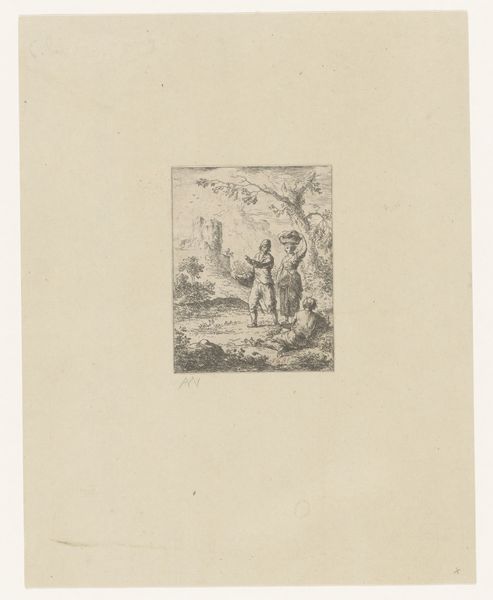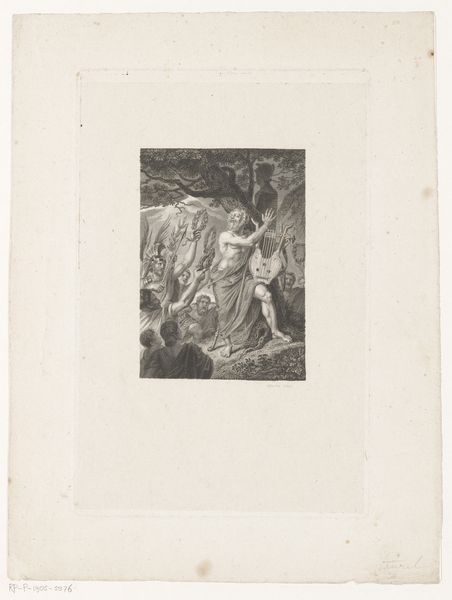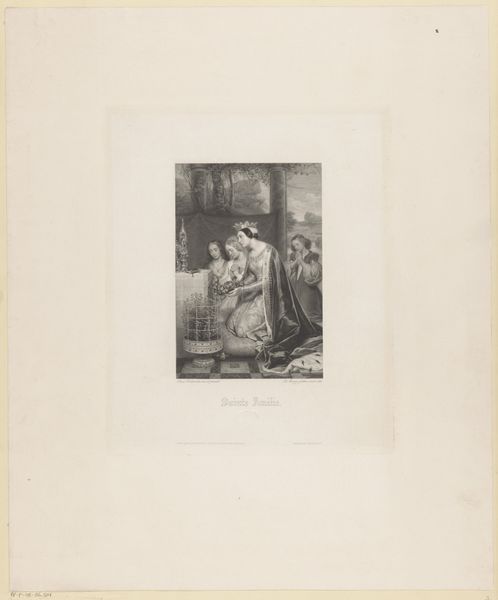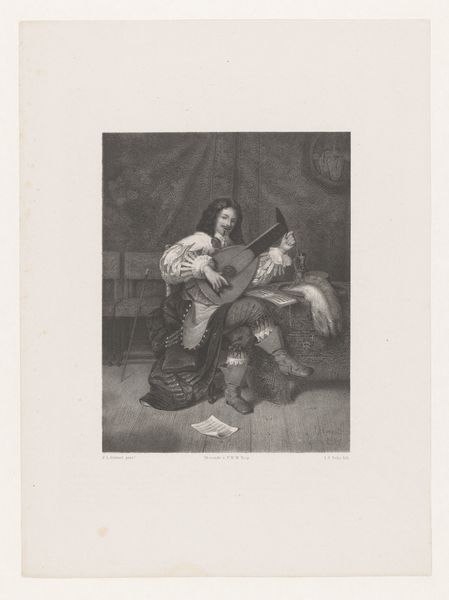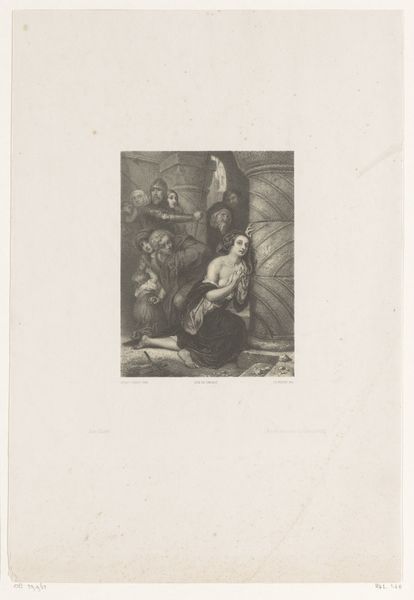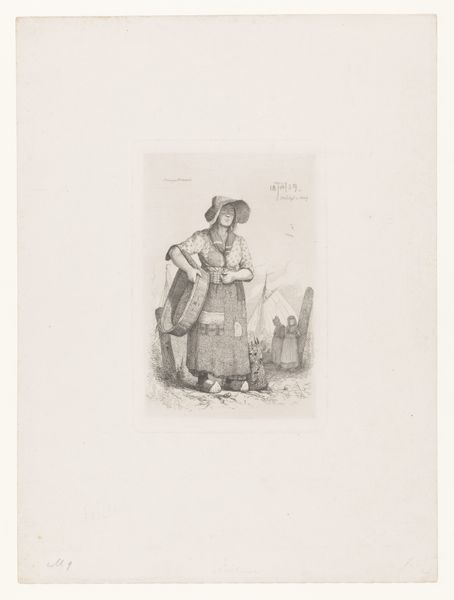
print, etching
#
portrait
# print
#
etching
#
old engraving style
#
genre-painting
#
realism
Dimensions: height 195 mm, width 130 mm
Copyright: Rijks Museum: Open Domain
Editor: This etching, "Méphisto en Martha," created by Willem Geets in 1874, depicts a rather strange encounter. It's unsettling... the way the man seems to be whispering something to the woman. What historical context informs how we interpret this interaction? Curator: It's essential to remember that art doesn't exist in a vacuum. This piece reflects the 19th-century fascination with morality plays and folklore. The title hints at the story of Faust. Mephisto, the devil, whispering to Martha to corrupt her is an interesting representation. How do you think that narrative impacts the way contemporary viewers perceive the piece, compared to audiences in 1874? Editor: Knowing that it might be connected to Faust definitely changes my perspective! Today, we might see this as a commentary on manipulation or power dynamics. Were there other artists at the time using these characters in their work, contributing to a shared visual language around these ideas? Curator: Absolutely. The Romantics, in particular, were keen on depicting figures like Mephisto to explore ideas of transgression and the darker aspects of the human psyche. Examining how these archetypes were deployed helps us understand the shifting cultural anxieties. What can this representation say about gender roles and morality expectations in Geets' time? Editor: It seems the woman is represented almost as an innocent bystander or a victim to the demon's antics... very intriguing! Thanks for contextualizing Geets’ "Méphisto en Martha," I’ll view all those folktale prints in museums a little differently from now on. Curator: Likewise. Thinking about the cultural lens really helps uncover a painting’s dialogue with its own era and us today.
Comments
No comments
Be the first to comment and join the conversation on the ultimate creative platform.

